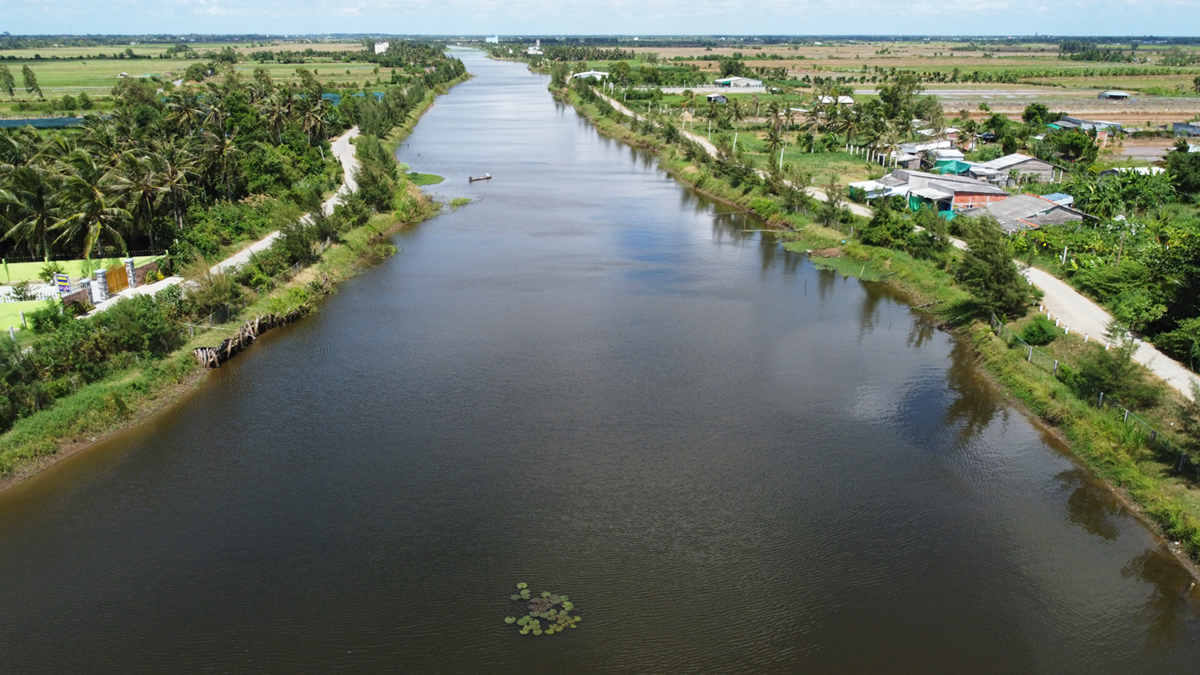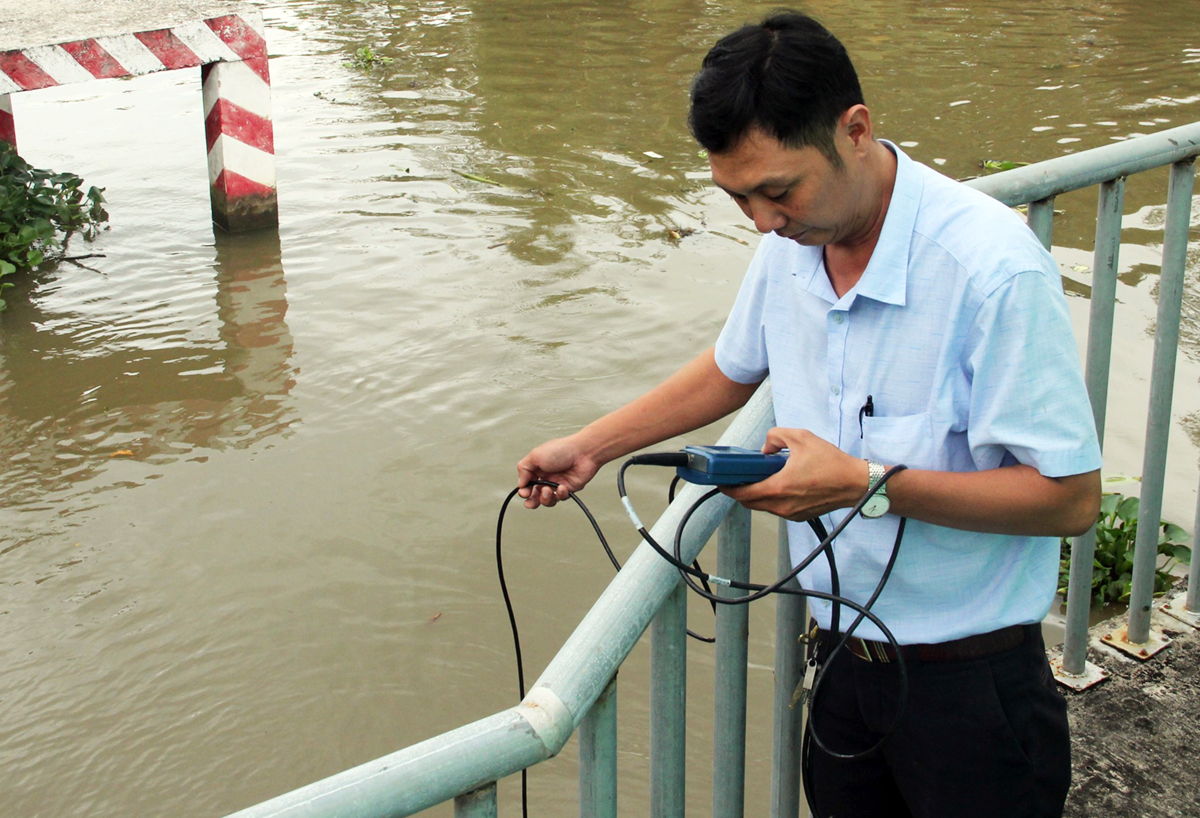Farmers and authorities in Vietnam’s Mekong Delta have started storing water, building dams and planting seeds early to avoid drought and salinity.
Living near Kenh Lap, Mekong Delta’s largest manmade reservoir in Ben Tre Province, Le Van Hao said he had witnessed how the reservoir, which has a capacity of nearly one million cubic meters, ran dry in April 2020.
That year, his family also had to buy fresh water at VND60,000 ($2.63) per cubic meter after using up all their stored reserves.
For this year’s dry season, Hao has come prepared.
“I have built eight more water tanks that could store over 10 cubic meters in total,” he said.
The management board of the lake, which lies in Phuoc Ngai Commune of Ba Tri District, said they had learned the hard way from the drought and salinity in 2020 and since last October, had already cleaned the lake and started storing freshwater.
“The water in the lake now has a salinity level of 0.65 parts per thousand (ppt), which is safe for both daily use and agricultural purposes,” a representative of the board said.
 |
|
Kenh Lap reservoir in Ben Tre Province has been filled up with freshwater, February 2022. Photo by VnExpress/Hoang Nam |
During the 2020 dry season, which normally lasts from late November to May in southern Vietnam, the delta, home to 20 million people, was hit by the worst drought ever that caused historic levels of salinity in its rivers as water flowed inland from the sea.
By mid-March last year seawater had intruded 50-110 kilometers into major rivers and all branches of the Mekong, two to eight kilometers more than in 2016 when the region had suffered the worst drought in a century.
In all, the lack of freshwater damaged 41,900 hectares of rice and 6,650 hectares of fruit orchards, while 96,000 families struggled to obtain water for their daily needs that year.
The situation was not as severe last year, but experts have been warning that climate change and the building of dams upstream of the Mekong River could worsen drought and salinity in the region.
According to Ben Tre Hydrometeorological Forecasting Center, from now until early March, salt intrusion would increase compared to the weeks prior.
In Tien Giang Province, Nguyen Duc Thinh, an official of the municipal Agriculture Department, said work has already started to build a steel dam on Nguyen Tan Thanh Canal, which links with the Tien River, a tributary of the Mekong.
Costing more than VND10 billion, the dam will allow the province to mitigate away salt intrusion and store freshwater for more than 1.1 million people and 128,000 hectares (316,300 acres) of farmland.
The province has also set up 17 wells and 100 public water faucets to serve people if the situation becomes complicated.
In Soc Trang Province, Phan Tan Dao, head of the irrigation unit under the Agriculture Department, said at culverts in Tran De District near the sea, the salinity level in recent days has increased to more than 16 ppt.
Meanwhile in Ke Sach District, the level has increased to 1 ppt.
Plants with low salinity tolerance like durian, mangosteen, and rambutan can only be irrigated with water with a salinity level of less than 0.5 ppt, according to farmers.
 |
|
An official from the Department of Agriculture and Rural Development in Bac Lieu Province measures the salinity level on a canal in the province, February 2022. Photo by VnExpress/Cuu Long |
Authorities in Soc Trang’s Long Phu District have told farmers to sow seeds one month earlier than usual. For now, farmers have already harvested rice and other farm products on a total area of 40,000 hectares.
Bac Lieu Province has spent VND19 billion to build 537 temporary dams to keep salinity away from rice and shrimp farms.
Le Hong Linh, director of the Irrigation Work Investment and Construction Management Board No. 10 under the Ministry of Agriculture and Rural Development, said all 13 compartments of the delta’s mega irrigation system in Kien Giang Province have been shut down to prevent salt intrusion.
Completed and put into use last December, the system worth VND3.3 trillion comprises two parts of the Cai Lon and Cai Be rivers, both originating in Hau Giang Province and passing through Kien Giang Province before meeting the sea.
- Reduce Hair Loss with PURA D’OR Gold Label Shampoo
- Castor Oil Has Made a “Huge” Difference With Hair and Brow Growth
- Excessive hair loss in men: Signs of illness that cannot be subjective
- Dịch Vụ SEO Website ở Los Angeles, CA: đưa trang web doanh nghiệp bạn lên top Google
- Nails Salon Sierra Madre
 VnExpress News The News Gateway of Vietnam
VnExpress News The News Gateway of Vietnam





